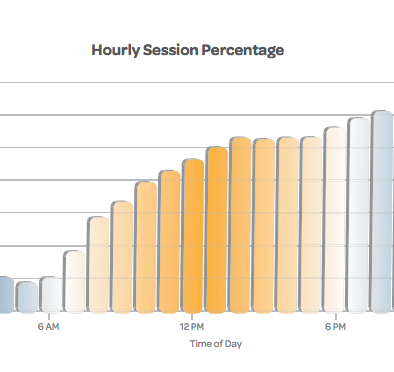The #RLTM Scoreboard: Social Networking Stats for the Week
| Facebook: | 901 million monthly active users | via Facebook |
| Twitter: | over 500 million users | via Twopcharts |
| Qzone: | 500 million active users | via China Internet Watch |
| Sina Weibo: | over 300 million users | via Bloomberg Businessweek |
| Renren: | over 170 million users | via iResearch iUser Tracker |
| LinkedIn: | 150 million members | via LinkedIn |
| Google Plus: | 170 million “people who have upgraded” | via Google |
| Tumblr: | 51.5 million blogs | via Tumblr |
| Instagram: | 40 million users | via TechCrunch |
| Tagged: | 20 million unique monthly users | via Tagged |
| Foursquare: | over 20 million users | via Foursquare |
| Pinterest: | 11.7 million unique monthly users | via TechCrunch |
| Posterous: | 3.9 million members | via SF Gate |
Please email marissa@modernmediapartners.com if you have additional updates, or a social network that you feel should be on the list.
Facebook Now Boasts 901 Million Monthly Active Users
Facebook filed its amended S-1 statement this week, in which the company claims that, as of March 31, it now has 901 million monthly active users such users–up from the 845 million monthly active users it clocked as of December 31. If Facebook was a country, it would now be the world’s third-largest in terms of population, smaller only than India, China and the US.
But what is a “monthly active user?” Danny Sullivan, in a very interesting analysis of Google+ user numbers (If Google’s Really Proud Of Google+, It Should Share Some Real User Figures), published a definition he received from a Facebook spokesperson:
“An active user is someone who has visited Facebook.com and logged-in (or been logged in) or who has taken an action with a Facebook feature (e.g. clicked “like”, etc…). If the user doesn’t do any of those things for 30 days, they aren’t considered an active user. If they only see social plugins across the web–even if those social plugins include social context such as friends’ photos, friends’ likes, friends’ recommendations–but doesn’t click anything, they are not an active user.”
So, all it takes is to have “logged in” to Facebook.com–but why would you log in if you’re not interested in using it in some way? Either way, 901 million is a big number, and it does not include accounts that have been created but are now completely inactive.
How is all that reach translating into revenue?
As The Wall Street Journal points out, as Facebook Inc. enters the final weeks before its landmark initial public offering, not all of the arrows are pointing up: first-quarter profit and revenue declined from the final quarter of 2011. The company’s first-quarter revenue was $1.06 billion, down 6% from the December quarter. Facebook says that the decline is caused by “seasonal trends” in the advertising business, and user growth in markets where Facebook generates less revenue per user.
The company’s results, “generally reflect strong growth in advertising revenue between the third and fourth quarters and slower growth, and for certain years a decline, in advertising spending between the fourth and subsequent first quarters,” it said. Industrywide, US online ad spending in the first quarter declined 3% from the fourth quarter, according to eMarketer.
In its filing, Facebook also said that the average price paid per ad in the first quarter was unchanged overall: rising ad prices in the U.S. and Canada were offset by an increasing percentage of ads being served to users in Asia and other parts of the world where ads are generally less expensive.
The Wall Street Journal cites eMarketer analyst Debra Aho Williamson, who points out that Facebook has been making significant changes to its advertiser offerings recently, which may have led to some of the slow-down as marketers redesignd new Timeline brand pages. Williamson expects the recent changes Facebook made to its ad offerings, along with its increasing focus on mobile, to have a more significant impact on the company’s revenues later in the year.


